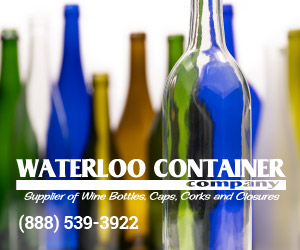You’ve bumped into one of the more debated (and sometimes misunderstood) corners of winemaking: “Natural wine” and whether you need to inoculate with a known yeast strain. It’s a lively topic, and one that gets wrapped up not only in science but in marketing, philosophy, and even a little politics.
The first and most important point is this: All fermentations are natural. Whether yeast cells arrive from the air in your cellar or are added from a carefully selected commercial packet, the transformation of sugar into alcohol by a living microbe is always a natural process. There aren’t any awards given in the winemaking world for being “hands off” or not using the tools available to us as winemakers. What there are, however, are very real differences in predictability, reliability, and risk.
Some winemakers (and quite a few consumers) have been drawn to the idea that “indigenous” or “wild” yeast fermentations are somehow purer, less manipulated, or more authentic. That can be a romantic image, but it isn’t quite the full story. Yeast strains capable of carrying a fermentation all the way to dryness don’t generally come in on the grapes themselves. What arrives from the vineyard are usually species that can start a fermentation, but they tend to peter out after a few percentage points of alcohol. The yeast species (and it’s often a mix of strains) that can finish the job — members of Saccharomyces cerevisiae — are most often those that have taken up residence in a winery over time. That’s why established cellars (where fermentations have been happening for decades or more) are much more likely to have strong ambient populations (often those same “commercial” yeast strains, by the way) that can run a “wild” fermentation to completion.
For a first-time winemaker working in a new space, the microbial odds are not nearly so reliable. You might get lucky and your must may take off beautifully. You might also wait two days and find nothing much happening, giving spoilage organisms (like those that produce vinegar aromas or nail-polish-like ethyl acetate) a chance to grow unchecked. That’s one of the main risks of leaving your ferment entirely to chance.
Commercial yeast strains, on the other hand, are simply Saccharomyces cells that have been selected for certain qualities (good tolerance of alcohol, ability to ferment cleanly at cooler temperatures, low production of hydrogen sulfide, etc.). Inoculation with one of these strains isn’t cheating or forcing something unnatural, it’s giving your fermentation a safe and predictable start. There’s no shame in choosing a yeast that helps you get the wine you want. (In fact, commercial wineries producing bottles that cost many times more than your home batch are very often inoculating, because consistency matters to them too.)
That doesn’t mean there’s no room for curiosity or experimentation. When non-inoculation works, you can end up with layers of aroma and texture that feel especially tied to place. But that success often rests on an invisible foundation of microbial stability that comes only after years of fermentations in the same cellar. For a beginner, the risk of spoilage outweighs the potential reward, in my book. If you are curious, a good way to experiment is to split your fruit into two lots — try a native fermentation on a small portion and inoculate the rest with a commercial yeast. That way you’ll be learning without putting your whole harvest at risk.
Just be very clear-eyed and realistic about all of this. Yeast cells love to travel on equipment, on our hands, and in the air. They can’t easily be 100% cleaned off or excluded in the busy environment of a winery during harvest. Even if your “non-inoculated” batch turns out great, how do you know it wasn’t a few happy commercial yeast cells that got in and took over the fermentation? Keep this in mind when listening to others online or in your winemaking group romanticize about their “natural” fermentations.
There’s another angle to your question too: The way the term “natural wine” gets used in the marketplace. Right now, there is no formal definition of what makes a wine “natural.” Some producers define it by farming practices, others by what happens (or doesn’t happen) in the cellar. The danger is that the word gets used more as a marketing tool than as a technical description. Even worse is that it’s been used and is being used as a cudgel against other brands, that somehow someone’s wine is less-than because they chose to inoculate with a heritage yeast isolated from a famous cellar in France hundreds of years ago (looking at you, Pasteur Champagne yeast). Not intervening in the fermentation doesn’t automatically make a wine healthier, more authentic, or somehow morally superior. What matters is whether the winemaker is making careful, informed choices that fit their goals for the wine.
So, my advice to you is gentle but firm: Inoculate your first batch. Give your yeast a head start and set yourself up for a complete, clean fermentation. You’ll learn so much more from a healthy, successful process than from worrying whether something is going wrong. Later on, once you’re comfortable, you can play with native ferments and see how you like them. And if you want to call those experiments “natural,” you can — but know that your inoculated wines are every bit as real and valid, because every fermentation, at its heart, is a natural one.





